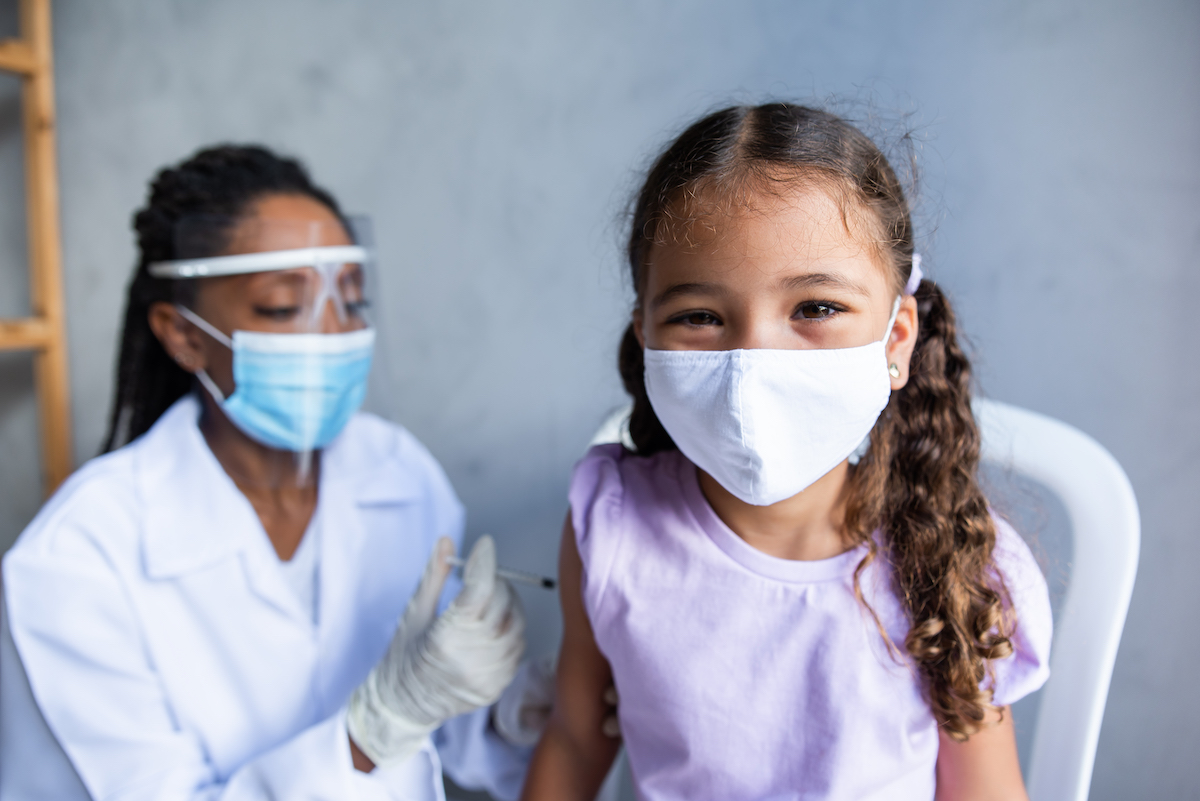Large analysis led by Kaiser Permanente researchers finds protection waned in 2022, emphasizing value of boosters for children
A large study of U.S. children and teens who received the Pfizer/BioNTech COVID-19 vaccine finds that it was effective through much of 2021, but waned over time, especially as the omicron variant became dominant in 2022. Teens who received a booster dose regained some protection.
The findings, published in Pediatrics, support wider use of COVID-19 vaccine boosters in young people, the authors said.

“COVID-19 vaccines in general have had very strong effectiveness,” said lead author Nicola Klein, MD, PhD, director of the Kaiser Permanente Vaccine Study Center, part of the Kaiser Permanente Division of Research. “We did see effectiveness drop significantly in teens, though protection increased for those who subsequently received the monovalent booster. That experience supports boosting young people when new versions of the vaccine become available.”
This study reported results from the VISION Network, a 10-state research consortium of 8 health systems, including Kaiser Permanente Northern California. The authors examined records for 9,800 patients aged 5-17 who went to an emergency department or urgent care for COVID-19-like illnesses and who were tested for COVID-19 between April 2021 and September 2022. Patients who tested positive were compared with control patients who tested negative to determine how well the vaccines prevented COVID-19. The study group reported early results in a paper published in March 2022.
Protection against emergency room/urgent care visits was high during the 2020 period when the delta variant was dominant, estimated at 93% for ages 12-17, waning to 77% for ages 12-15 and 72% for ages 16-17. During the later omicron period, effectiveness was less, starting at 64% for ages 12-15, waning to 13% after 150 days. For younger children aged 5-11, effectiveness was estimated at 49% initially, with 41% remaining after 150 days.
The analysis also assessed protection against hospitalization, which it determined was high, at 97%, during the delta period and remaining at 98% for ages 16-17. There were too few hospitalizations of patients aged 5-17 during the later omicron period for the analysis to reach statistical significance.
Effects of booster shot
Older children who were eligible to receive a monovalent booster during the study period received improved protection – the booster increased effectiveness to 54% at ages 12-15 and 46% at ages 16-17.
Teens (aged 12 and over) began receiving the Pfizer/BioNTech vaccine in August 2021, and children in June 2022. The most recent version of the vaccine – known as the bivalent booster – was offered to adults and teens over age 12 starting in September 2022; for children aged 5-11 in October 2022; and for children 6 months to 4 years in December 2022. The bivalent booster is aimed at the original COVID-19 strain along with more recently circulating subvariants.
However, adoption has been limited – 20% of children and adolescents had received one by March 2023, according to the Centers for Disease Control and Prevention (CDC).
The results of this analysis, and the improvement in protection from the first, monovalent, booster, suggest the newer bivalent booster may further help keep children from developing severe COVID-19, Klein said. “Young people do end up becoming seriously ill from COVID-19, and it is a preventable disease with a vaccine that is readily available and safe,” she said. “Pediatricians would like to see more adoption of this useful preventive measure.”
The study was funded by the CDC.
Additional Kaiser Permanente Division of Research co-authors were Ned Lewis, MPH, Kristin Goddard, MPH, Bruce Fireman, MA, and Ousseny Zerbo, PhD. The full list of authors is available on the paper.
# # #
About the Kaiser Permanente Division of Research
The Kaiser Permanente Division of Research conducts, publishes and disseminates epidemiologic and health services research to improve the health and medical care of Kaiser Permanente members and society at large. It seeks to understand the determinants of illness and well-being, and to improve the quality and cost-effectiveness of health care. Currently, DOR’s 600-plus staff is working on more than 450 epidemiological and health services research projects. For more information, visit divisionofresearch.kaiserpermanente.org or follow us @KPDOR.





This Post Has 0 Comments